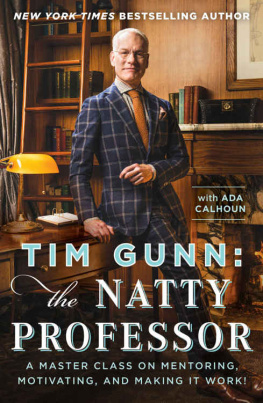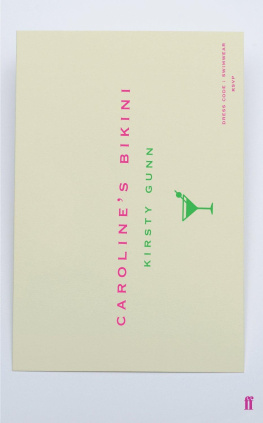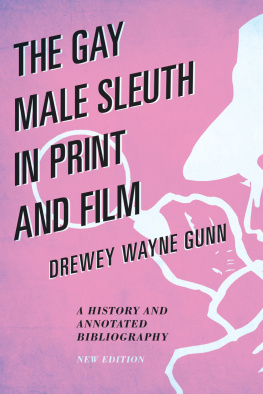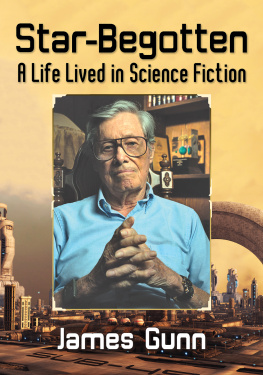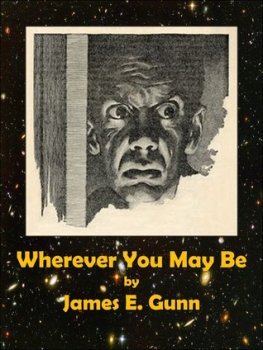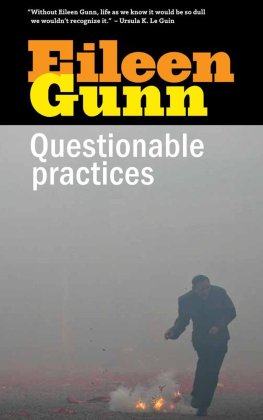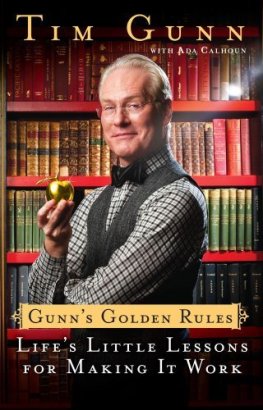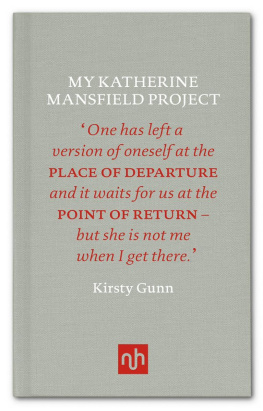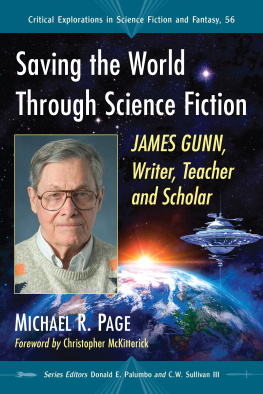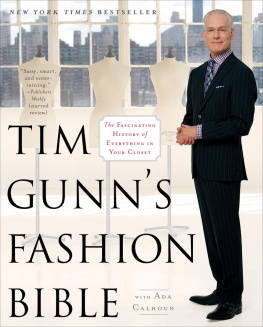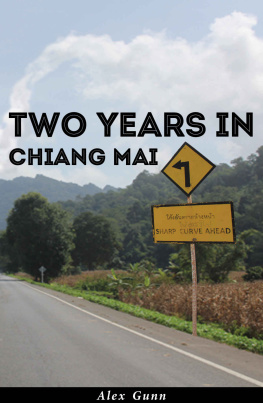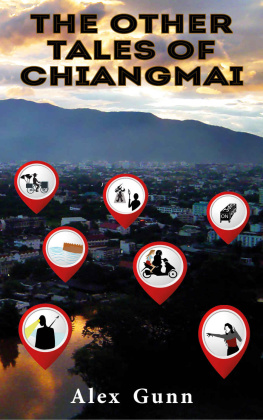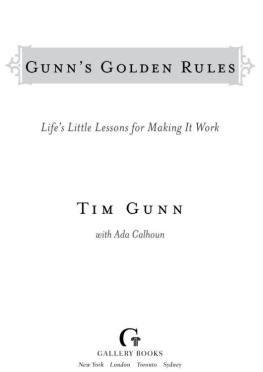Thank you for downloading this Gallery Books eBook.
Join our mailing list and get updates on new releases, deals, bonus content and other great books from Gallery Books and Simon & Schuster.
C LICK H ERE T O S IGN U P
or visit us online to sign up at
eBookNews.SimonandSchuster.com
To two remarkable teachers,
William Christenberry and Rona Slade,
who made more of an impact on who I became than they can ever imagine
CONTENTS
INTRODUCTION
MY T.E.A.C.H. PHILOSOPHY
My goal for this book is to start a national conversation about teaching. We talk all the time about the administration of educationtest scores and Common Core, classroom size and teachers unionsbut what we dont talk about nearly enough is the single most important aspect of teaching, the key to determining whether knowledge is actually transmitted: the relationship between teacher and student. Theres content and then theres methodology. The content will change, but good teaching is eternal.
I have been a teacher for more than half my life. Before my ten years as a mentor on Project Runway , I was for almost thirty years a classroom educator, and ultimately chair of the Parsons fashion design program. Despite the fact that Im no longer in a classroom, I still consider myself first and foremost a teacher, and I try every day to become a better one.
When I started teaching, I bought three or four how-to books. I hated all of them. Some books on public speaking were useful, but I threw away all my teaching books and decided to just do what felt right. I made plenty of mistakes, but I also learned a lot.
In this book, as on TV, I want to share my experiences in the hopes that others may benefit. To me, this is a book of appreciation for those doing the important work of teaching. Its an I-feel-your-pain book, a cheerleading book, and a book that raises questions about what works best.
My view is that good teaching is all about asking questions driven by curiosity. Its about connecting with your students, not only as students but as fellow human beings. In order to give helpful and responsible instruction, you need contextas much information as you can elicit. If you dont know your students, how can you be sure that what you say will be meaningful for them?
I will add that asking questions of my class removed the sense of obligation I felt early in my teaching career to have all the answers on the first day. I realized over time that it was a journey we were on together. It wasnt up to me to do all the work. I came to realize that a class is a collaboration, as is life!
This past year I was lucky enough to host a Project Runway spinoff on Lifetime. Under the Gunn dealt with just this question of how to be a good mentor. On the show, I supervised three former designersMondo Guerra, Anya Ayoung-Chee, and Nick Verreosas they learned to mentor younger designers.
On Under the Gunn , as the designers learned how to create innovative work under pressure, the mentors learned how best to guide the designers: to support them without coddling, to root for them without being blind to their faults, and to give them advice without being overbearing (or working on their garmentsIm looking at you, Nick!). The show was a fashion competition, but it also explored the question: What makes for a good teacher?
I am very sympathetic to struggling teachers. When I started out as a young design teacher, I had such bad stage fright that I threw up in the parking lot before class. Once in the classroom, I needed at times to grip the eraser ledge to keep from keeling over. Luckily, over time, the panic attacks stopped. I started to gain confidence. And I came to think of teaching as a calling. To see my students grow and mature and learn became for me the most important thing in the world.
When I became a department chair overseeing other teachers, I started to see more clearly how many different modes of teaching there were and to appreciate my colleagues different styles. I also became convinced that certain methodologies were damaging, and bad teachers filled me with rage.
I think we all have stories about teachers whose influence on us was less than positive. One friend of mine had a second-grade music teacher who made her sing solos in front of the class to cure her shyness. No surprise, it did not work, but it did rob her of the enjoyment of music for years to come.
My miserable school years instilled in me a deep loathing for cruel teachers. Im thinking of Mr. Allisonhalf a century later, I still remember his nametelling me to throw an eraser across the room. He thought I was too uptight. He charged himself with the task of making me break a rule. Throw it! he said, putting the eraser in my hand. I refused. It was humiliating. Im sure he thought he was being very inspirational, but the reality was that he was only highlighting my anguish. And I had trouble recovering at that school. (I didnt last long there, or at any school. I bounced around like a kangarooa kangaroo in need of talk therapy and antidepressants.)
What the Mr. Allisons of the world commit is, essentially, teaching-malpractice. Shouldnt there be an educational equivalent of the Hippocratic oath? Breaching the oath would hold you accountable for your behavior, as it would with an M.D. Teachers who save us from ignorance should be given the glory (and income!) of open-heart surgeons. And yet, being such an unhappy student made me that much more grateful for those teachers who treated me with kindness and respect, or who showed me that I had value.
One day in elementary school, our art teacher handed out bars of soap and told us to carve anything we wanted. She probably just wanted to relax for an hour, but I took the assignment extremely seriously. Most of my classmates made ducks or other animals; I whittled the Governors Palace from Colonial Williamsburg.
In addition to being, as it turned out, an excellent way to attract the attention of bullies, my soap palace taught me that I cared about architecture and construction in a way no one else in my class did. As hapless as I was at so many aspects of school (I had a terrible stutter, cried all the time, and often pretended to be sick so I could stay home), I knew, looking at that flaky little building, that there might be something I could do well after all.
I found every stage of my arts education liberating and life changing. At home, there were strict rules. My mother was so particular that she would object to my putting the knife and fork on the same side of the plate. When it came to art, there were no set rules, and the answer wasnt in the back of the book. What a revolutionary concept!
When I was at the Corcoran School of Art in 1974, the sculptor Anne Truitt taught me how to look at color and form in completely new ways. Color has to sing from the inside, she said. In order to do that, it has to have some transparency, and in order to give it that transparency, you cant use too much white, because that will kill it. She would talk about colors zooming into being when they were mixed.
Her passion for color was contagious. Id never before thought about the power of a color to die or to zoom! Thanks to her, colors suddenly were characters to me. Anne taught me so much about life, too. She was a genuinely good person, and I found myself wanting more than anything to be like her. You saw this seriousness and integrity in her work, and in her life. The relationship between teachers and those theyre teaching has almost boundless potential for transformation.
My decision to seek out Anne Truitt and study under hernot toward any kind of career goal, but because I simply loved her work and admired her as a personput me where I am today. After graduation, I became a sculptor and builder of architectural models. Even though I eventually wound up in the field of fashion, the roots of my appreciation for fashion are in architecture. Some people believe in being practical, and only studying things that will prepare us for the exact job we will have. But I believe that education should broaden our horizons. Nothing we learn that we care about is ever wasted.
Next page
